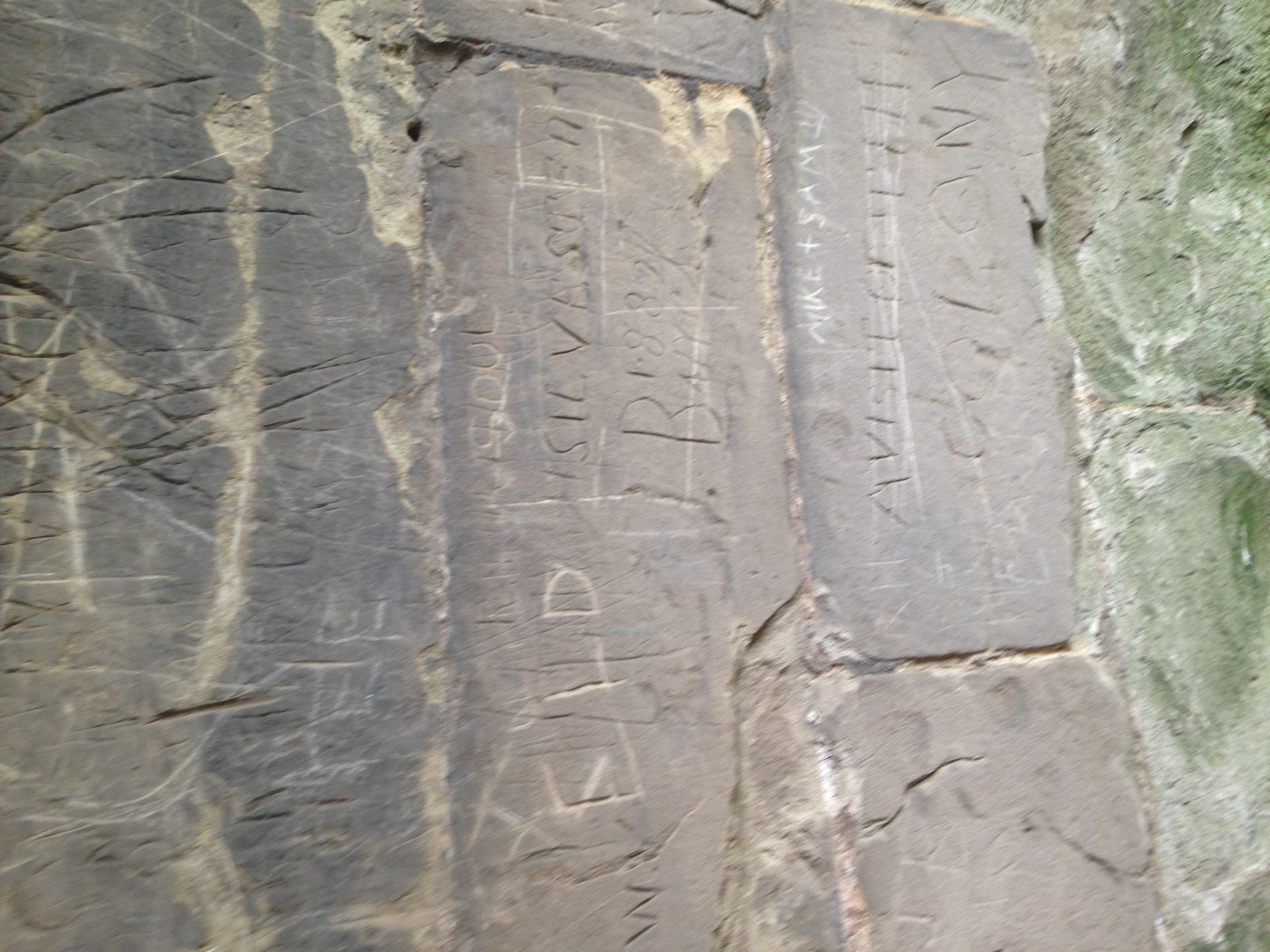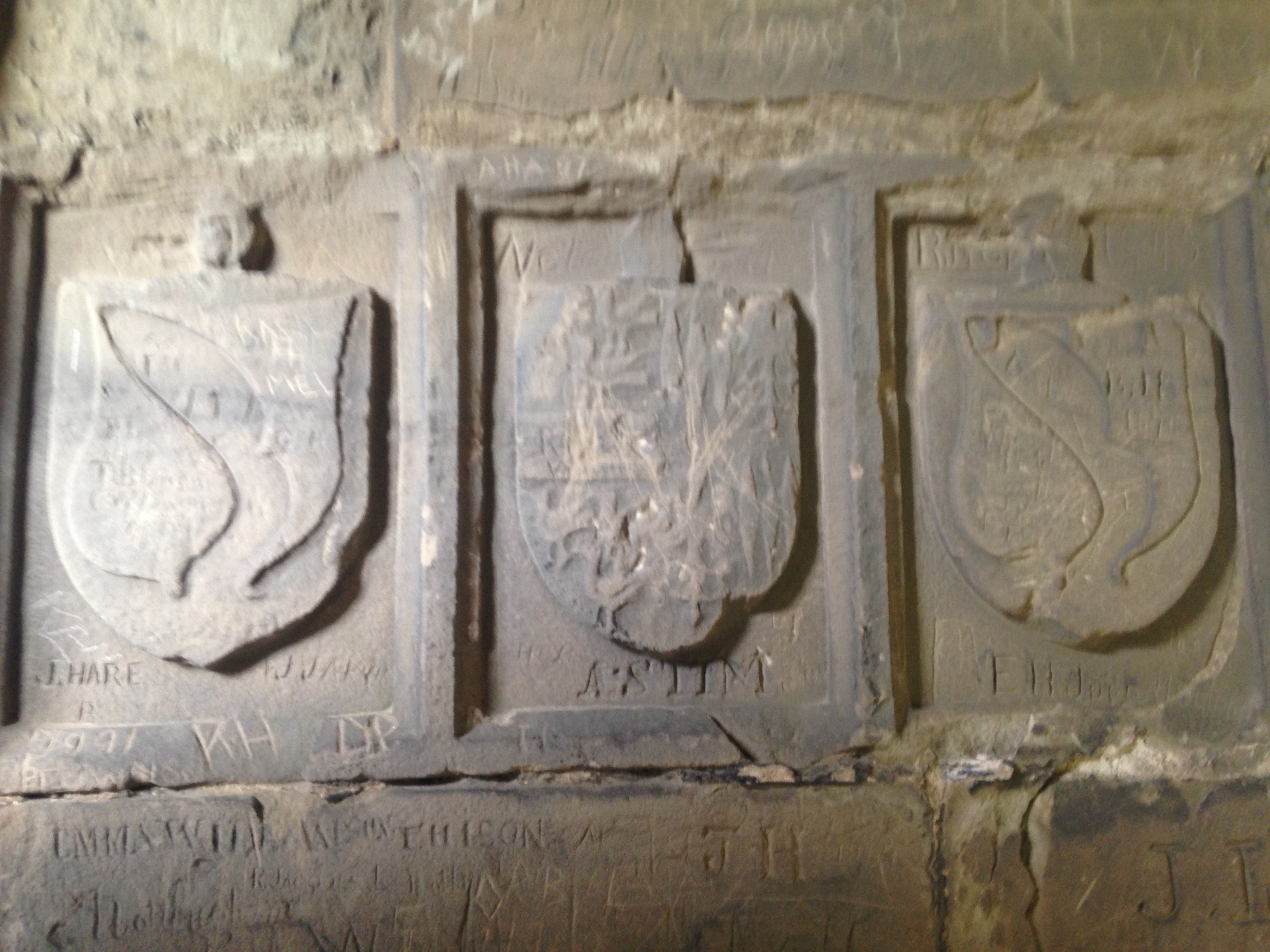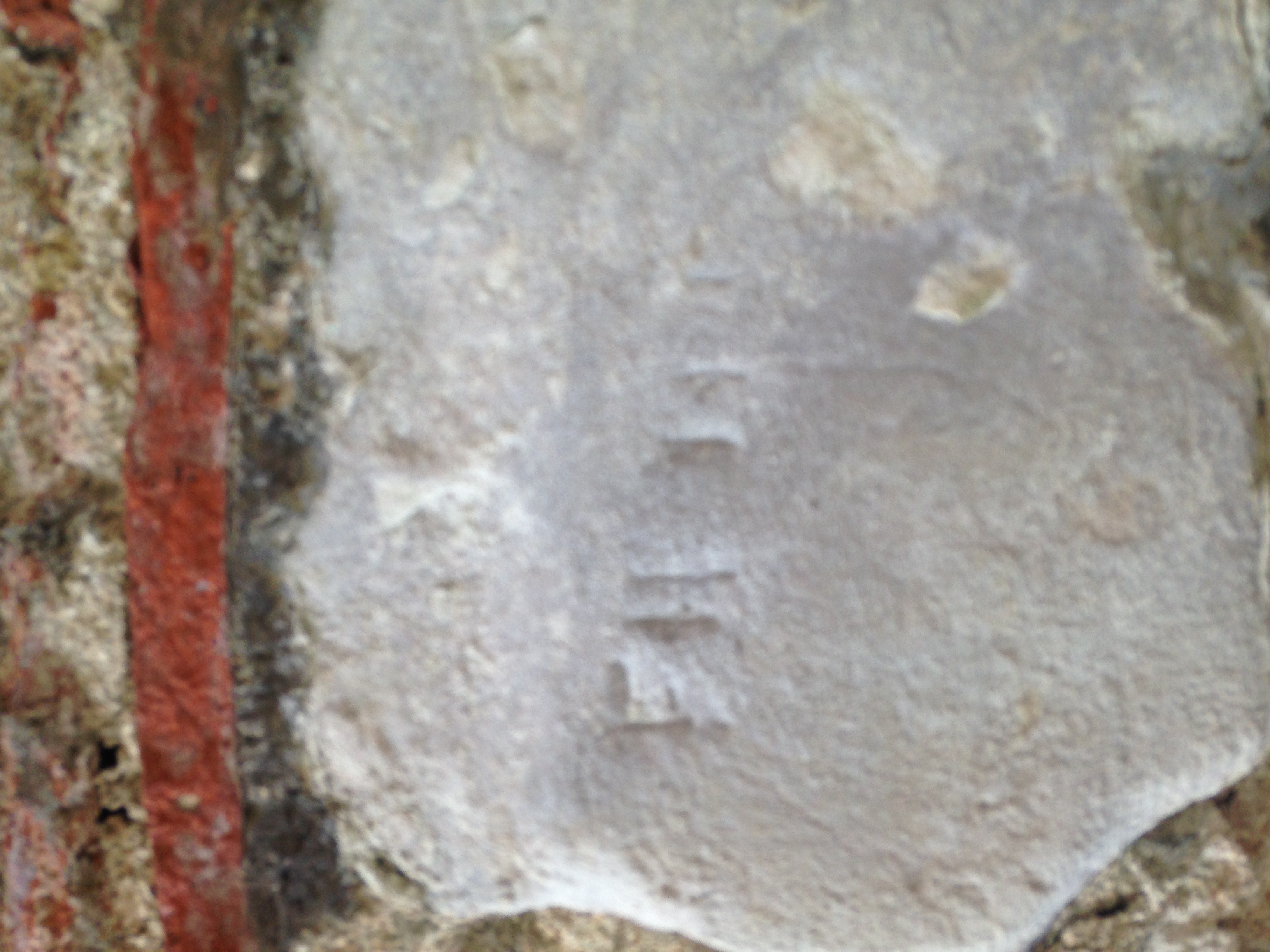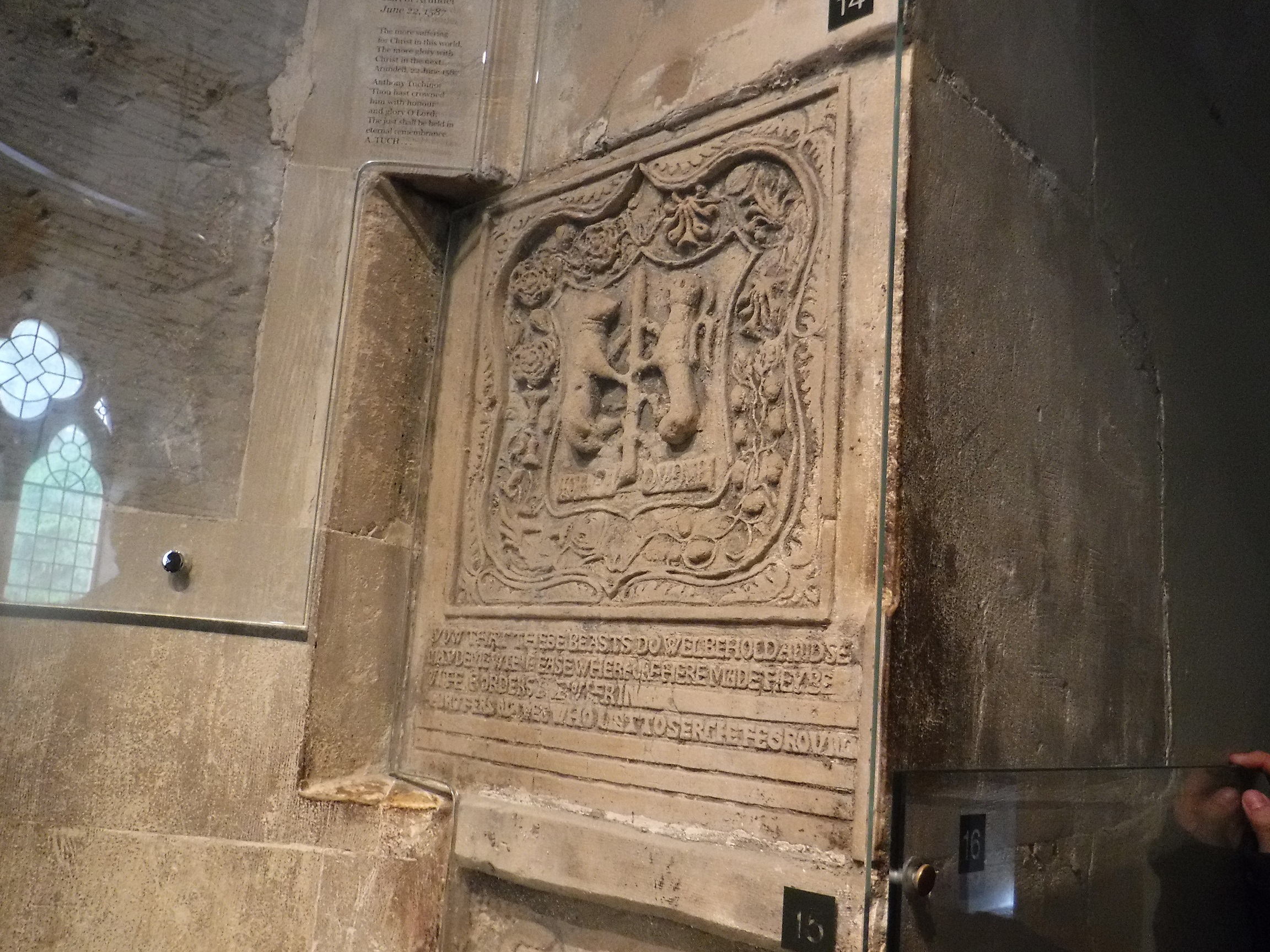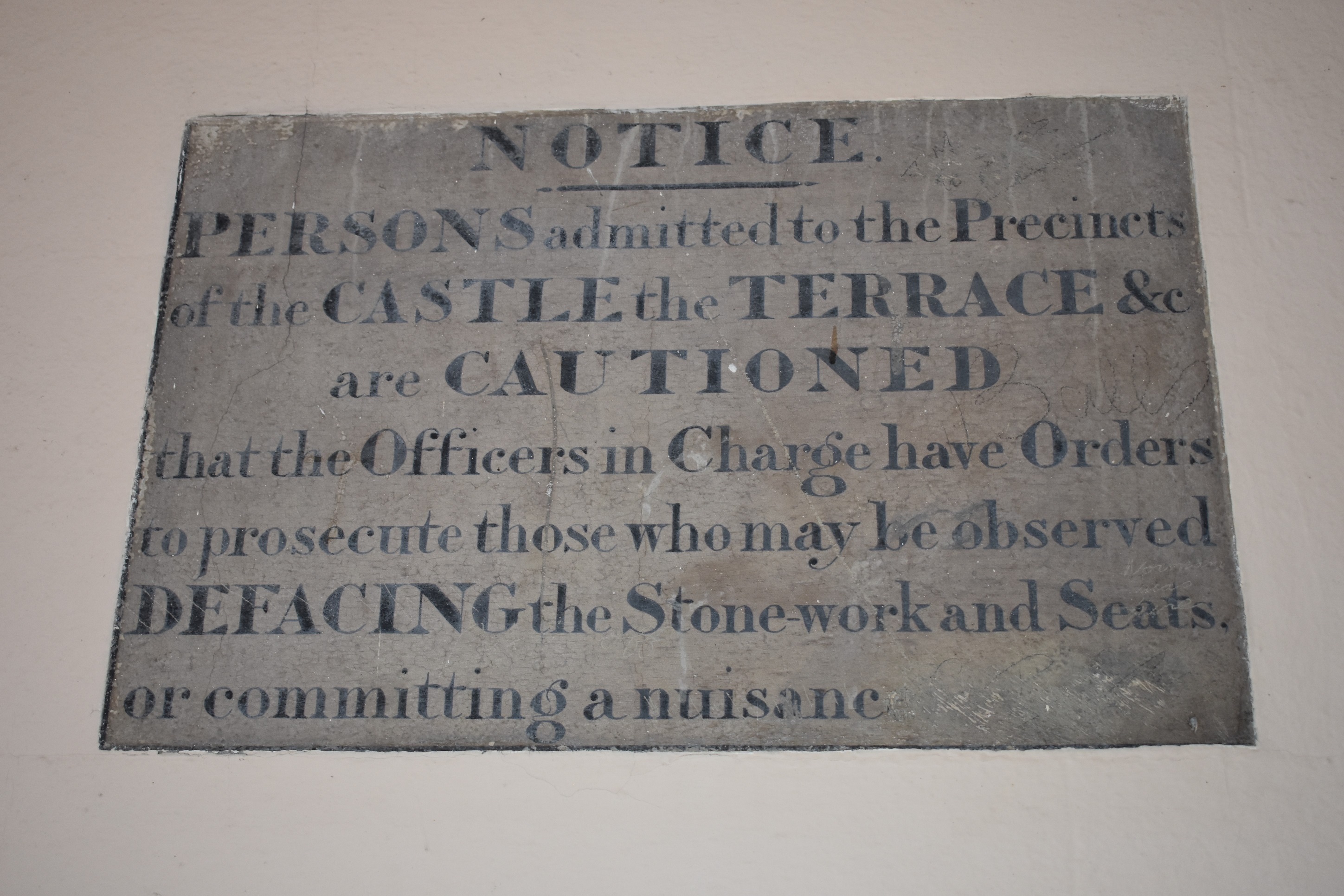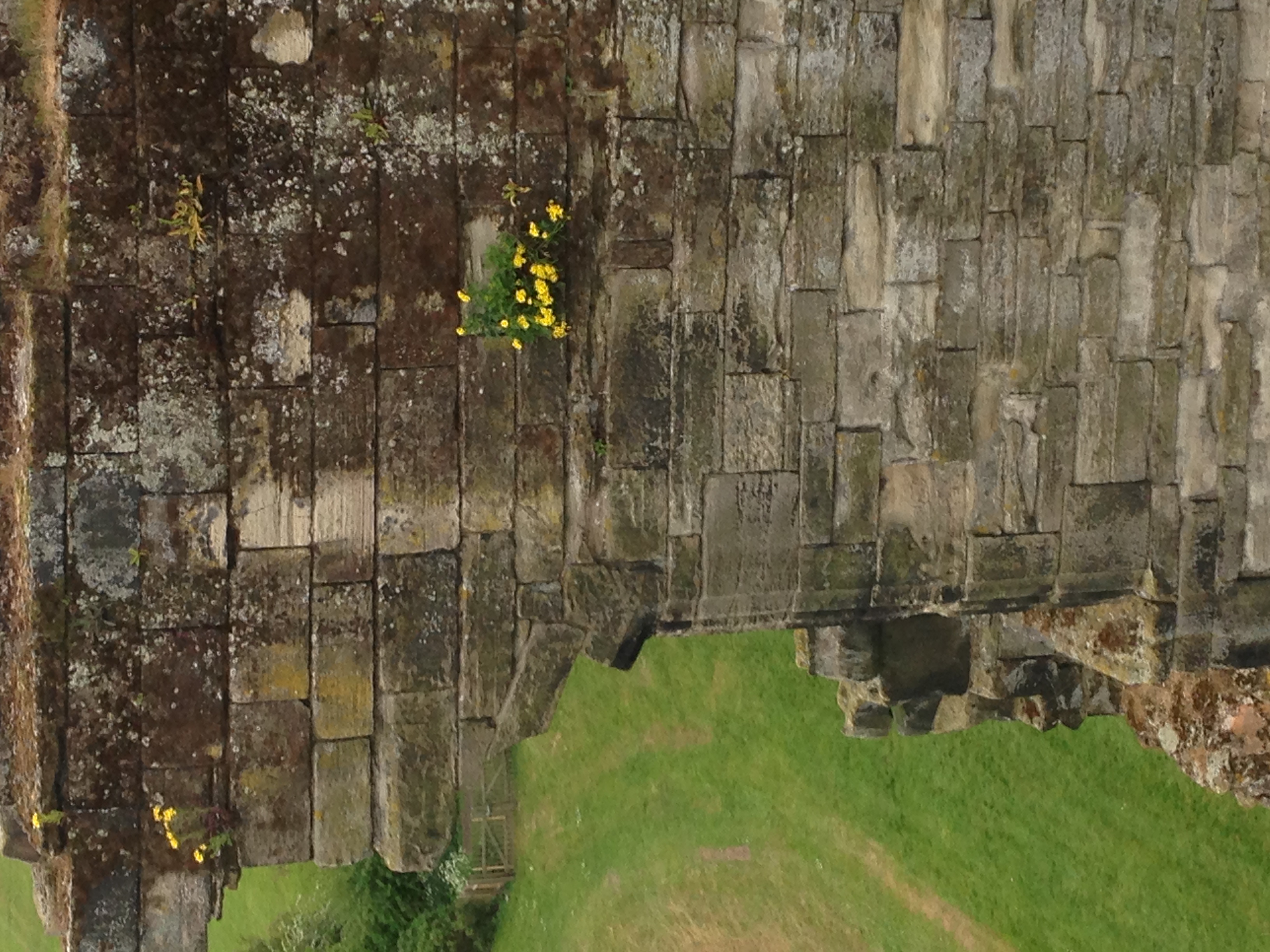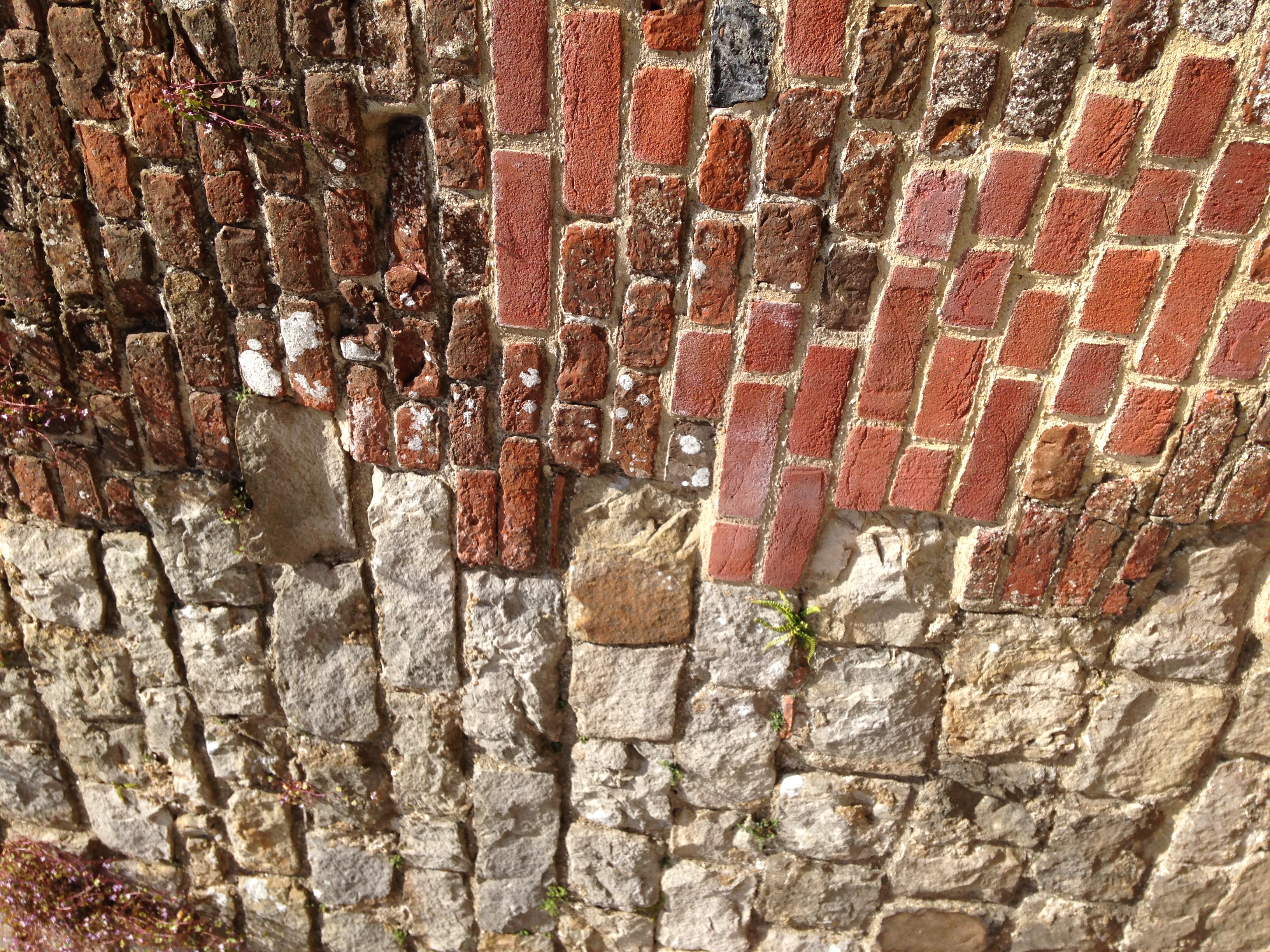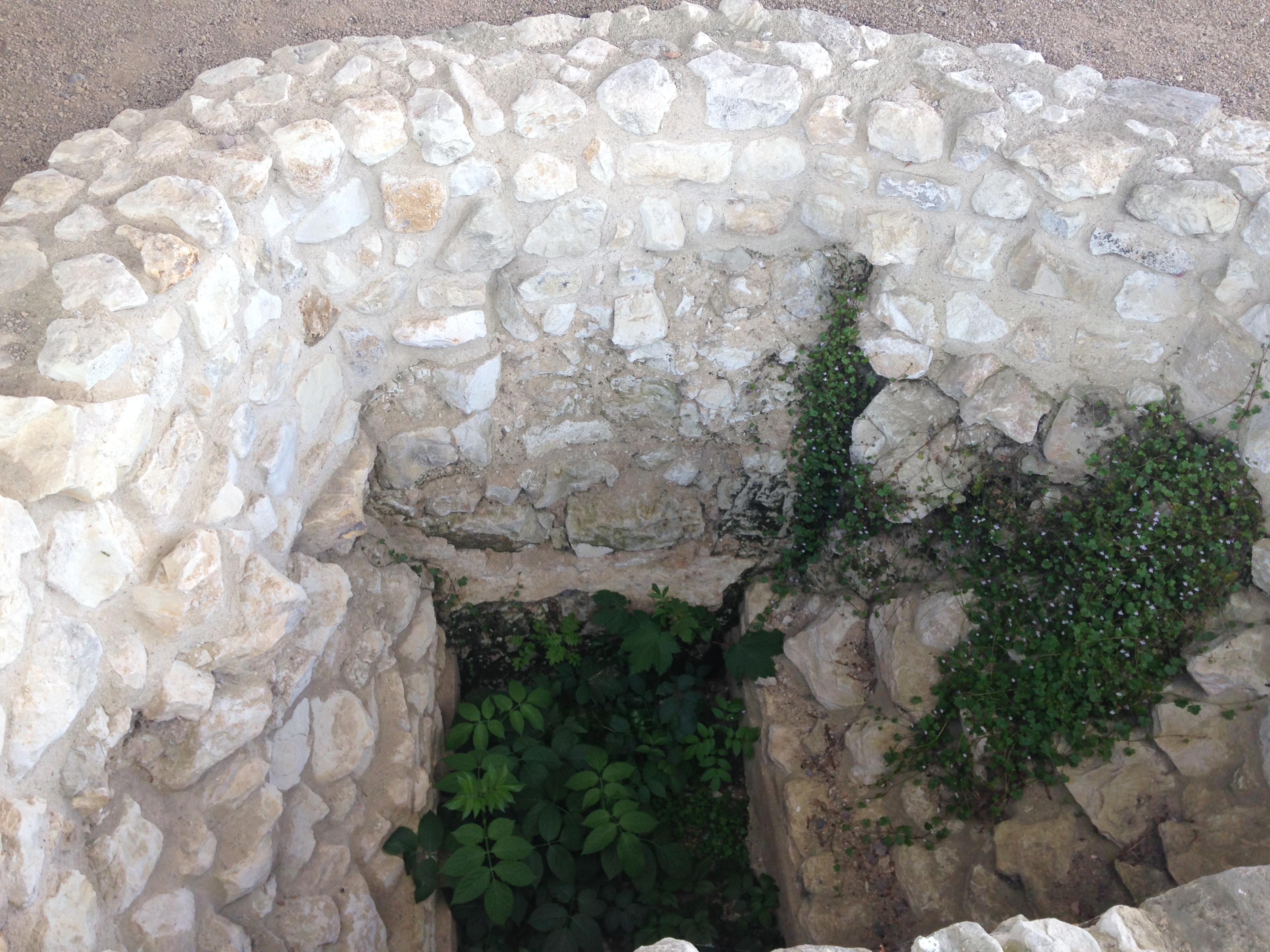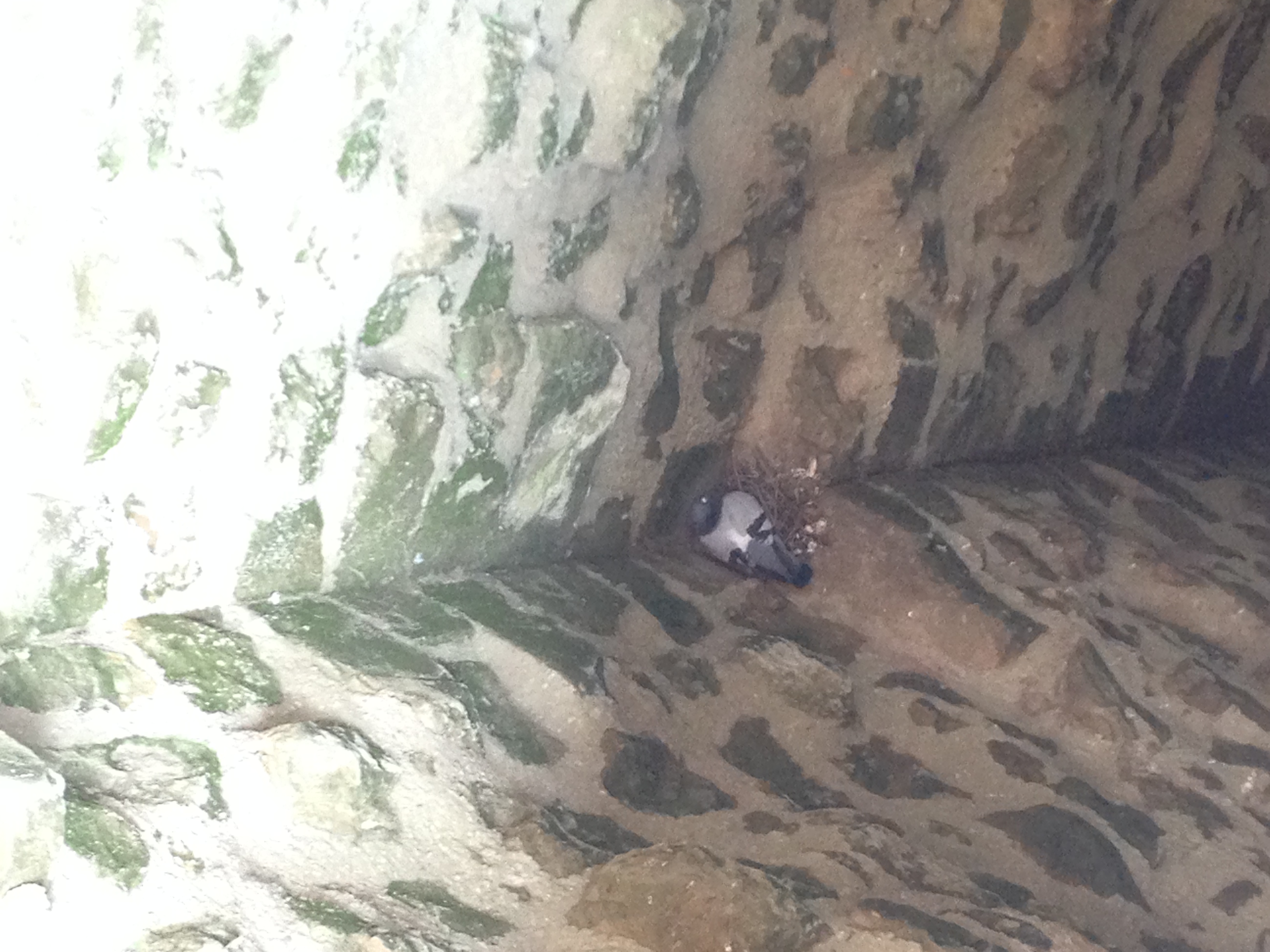Preservation of Medieval Art
From Londonhua WIKI
The Preservation of Medieval Castles
 Outside Farnham Castle |
Contents
[hide]Abstract
The aim of this project was to find how castles in England are being persevered and how effective the preservation efforts have been. I had no previous experience in preservation methods. I found that preserving any artifact or building is a lot more complicated than I initially though. It is impossible to conserve a castle forever, so it is necessary to determine what aspect of the castle should be preserved. It is not always possible to preserve a castle historically depending on the location and the materials used, however, they can still be preserved artistically with new materials if preserving the history is less important. The impact of tourism was also interesting since most of the funding for preserving the castles come from it but having large crowds can be very damaging to the castle if the proper precautions are not taken.
Introduction
The purpose of this project was to see how well medieval castles and architecture are being preserved. It is very important to make sure that out history is preserved so we can figure out how people lived and understand there decisions and how it brought about society today. In order to evaluate how well they are preserved, it is necessary to define what preservation means. I found that there are two main ways to preserve a castle: preserving it historically and preserving it artistically. Preserving it historically would mean leaving it mostly as found, making only minor changes to keep what original material there is intact. This would mean not doing restorations since that would mean changing the structure. Preserving it artistically would mean trying to preserve the idea or message the building gets across. This would mean restoring the building as much as possible and in some cases, such as in Windsor castle, changing the building entirely to suit the current needs. Windsor is a 19th century representation of what people think a medieval castle should look like as opposed to having a genuine medieval interior.[1] There are middle roads used at places like the Tower of London where the restorations are made to be historically accurate. Large amount of research is done before any restoration or conservation work to ensure that the restorations exactly match what the original builder intended the building to be. It is also important to consider how tourism will effect how a castle it preserved. It takes a lot of money to research how to preserve a certain castle and even more to fund a restoration or conservation project. In most cases this money comes from tourists or charity funds that take donations from tourists. However, this is a potential problem because large numbers of people can cause a lot of damage to the castles and there artifacts. My deliverable goes into how four different castles have dealt with tourism and funding their preservation, then comparing how well they have been preserved based on how well maintained they are. I have never looked into preservation or architecture before so my strategy for completing this project was completely new to me.
Section 1: Background
First, it is necessary to distinguish between preservation, conservation, and restoration, because each means a very different future for what is being conserved. Preservation will be defined as trying to keep the object as found without making and changes to correct for previous or future damage. Restoration would be trying to recreate lost elements of the object using what is left behind. Conservation is the keeping the object in a predetermined state via preservation, restoration or both. additionally we need to differentiate between preservation goals and presentation goals since both factor into how an object should be conserved.
Preservation
It is impossible to keep art and architecture from being damaged or corroded entirely, however, some measures can be taken to reduce the amount of damage they take and extend their lifetime. Historical Palaces does a lot of preservation work to keep their collections in a presentable state. At the Tower of London Historical Palaces have identified different risk factors and have done work to minimize them. The potential dangers are dust, light, pollution, vibrations, and weather. [2]
Dust can cause damage by working its way into materials or by caking onto a material. With more susceptible materials like fabrics, dust can work its way into the fibers and cause damage and weaken the material. It can also sometimes chemically react with the material causing further damage. Dust can also absorb moisture or pollutants which can cause damage. Additionally it can serve as food for pests, which could then damage the material. With more resistant materials, dust can cement on over time. This makes it hard to remove without causing damage. Frequently dusting objects can prevent it from cementing on or prevent it from absorbing pollution and moisture and prevent damage. Preventing dust from getting on them in the first place woks as well. Since most dust indoors comes from people, keeping a distance between them and the object can prevent dust from accumulating. [3][4]
Light can cause bleaching in more sensitive materials like the ones used for tapestries and paintings. Sunlight is usually the most damaging variety since it covers such a large range of waves and an extensive variety of ultra violet rays, but all light can be damaging. Once a material has been discolored or faded and even weakened due to light exposure it is impossible to repair. Since sunlight is the most damaging variety of light, keeping the objects indoors with limited natural light and low amounts of artificial lighting can limit damage due to light exposure. [5]
Pollution, like dust can work its way into different materials and chemically react with them or cause other damage. Castles and art located in large cities are more at risk for damage due to pollution due to gas emissions from cars and other vehicles. Monitoring the amount of pollution and keeping objects in cases when the levels are high can prevent damage due to pollution. [6][7]
Vibration can loosen floorboards and windows or cause cracks and damage to structures. Vibration tends to work in small amounts overtime and causes damage through cyclic fatigue. It can be caused by crowds of people walking through an area. Keeping activity in the area low can reduce the amount of vibrations. Vibrations should be kept low enough to prevent damage and can be monitored in higher risk areas with sensors.[8]
Harsh weather like rain, wind, snow or frost can increase erosion significantly. Improper conditions such as humidity and temperature can even damage more sensitive items while they are indoors. Shielding items outdoors and keeping more sensitive items on a climate controlled display case can prevent damage.[9][10]
It is near impossible to preserve a building since there is no way of protecting it from either weather or pollution. In some cases, if part of the building is buried there will be an active choice to leave it that way instead of excavating it in order to prevent exposing it to the elements. In the case of Wigmore Castle, ferns and other greenery was deliberately left on the walls because the protection the plants were providing it from the weather was doing more conservative work that the roots were doing damage to the mortar[11].
Restoration
There is some controversy as to whether restoration is good for historic items or damaging. It depends on the conservative goals and the quality of the restoration. The main issue is maintaining historic integrity. If a restoration is attempted after there is no longer sufficient record or original material is left to understand the builders intent, then it can be done inaccurately.[12] Patrick Faulkner compared it to a game of telephone where the end result looks kind of similar but may have an entirely different meaning. Additionally if a building is restored continuously as the original material erodes, then eventually the entire building will have been replaced and it loses its historic value. In order for a restoration to be quality, analysis is necessary as to which aspect that need to be preserved. in a more visual or artistic sense is might be OK to replace the material with a more durable variety that looks similar so the look of the building can be conserved.[13][14] If the structure or building method is important than the materials and building procedure need to be adequately analysed and some loss of visual accuracy over time should be accepted since it is not economically feasible to continuously repair the building such that the original builder's intent is completely conserved. The main issue with restoration is that is is sometimes done in a well meaning manner without fully understanding of what is being restored, which can lead to further damage.[15]
Conservation
Conservation is very relative and what it means for different buildings is determined on a case by case basis. For some buildings this might mean adhering to the original structure and materials essentially freezing the place in time while in others it might mean allowing the building to change and adapt over time. In the case if Wigmore Castle it meant leaving as much as the original structure as possible, even leaving some sections buried and inaccessible such that they do not get damaged or corroded.[16] conversely in the case of Norton Priory the educational and and human interest in it was prioritized and it sees many changes based on visitor comments[17] In the same way it is essential to clearly define what is being restored, why and to what extent is necessary for a restoration, It is necessary to understand what aspects of a castle needs conserving. decided this depends on how the historic value of the building weighs against the presentation value. In many cases it is impossible to preserve a building as it was found and still allow for visitors to understand it and travel though it without causing damage[18]. More historically valuable building tend to have national support and regulations and have prioritize the building's safety, but some privately owned buildings might depend more on tourism to support maintenance fees. A balance between presentation and preservation needs to be decided.
Section 2: Deliverable
Quality of Restorations and Effectiveness of Preservation Efforts
Tower of London
The Tower of London is a much more famous Castle so they do not have to sacrifice as much to get visitors and revenue. It is Preserved by Historical Palaces,however, they do not get any government funding, as a result many of the room were converted to display cases. There are some rooms that are conserved extremely well such as the Chapel in the white tower and Edward I's bedroom. They are much more protective of the artifacts than most of the rooms, however the mortar is kept well. there was not any graffiti or a large number of plants growing in the walls. They had two restoration projects going on while I visited, both where carefully studied to determine how to best preserve the historic value while still allowing visitors to enjoy it. specifically Edward I's bedroom was being repainted using the same kind of paint and method of application and the mortar on the white tower was being repaired. Overall it is one of the better preserved castles.
Windsor Castle
Windsor Castle is another well known castle with a lot of revenue to put towards preservation. It underwent a lot of remodeling after the medieval time period. there are limited aspects of a medieval interior left.[19] There was clearly more on an aim to preserve the artistic aspect of a medieval castle as opposed to the castle itself. There was no graffiti and a small amount of plants growing in the mortar. In the restoration ob St. Georges Hall after the fire, they recreated a medieval style ceiling that was not there previously. It was built in the using the same medieval methods to construct that kind of ceiling. They did have a conservation project going on the replace lead on the roof and conserve the stonework. The conservation of the idea of a medieval castle is done fairly well even though most of the castle would not accurately fit in a medieval time period. Since they did successfully converse the impression of a medieval castle with limited damage to the building I would consider it to be a more quality preservation.
Ashby de la Zouch
Ashby is a much smaller castle than either the Tower of London or Windsor Castle. It is much better know then Fernham Castle and sees more people there solely to tour it. The initial ruins make it seem like it has been very poorly maintained but the majority of the damage is due to the fact that is was actively blown up after its part in the civil war. There is a lot of graffiti and a moderate amount of plants growing on the mortar. Overall it seems to be poorly maintained but presents itself almost as well and as the Tower of London. I could also be considered a little more authentic since no restoration work has been done.
Farnham Castle
Farnham Castle was the smallest and least known of the castles I visited. Since it doubled as a bishops house it is frequently used for weddings which is were they gain most of their revenue. I was unable to see the section they hold the weddings in since it is only open for viewing on Wednesdays. The Keep was available to explore. They did install signposts to explain aspects of the castle and its history along with some safety rails but most of the keep had been unchanged. there was a large excavation in the center of the keep showing the old tower. I could only find one piece of graffiti and there were few plants growing on the walls. Despite being the smallest castle it seemed to be one of the best maintained without restorations.
Comparing Persevered Castles
This section will include galleries that shows direct comparisons of the castles.
Gallery Graffiti
Gallery Plants
Gallery Animals
Conclusion
It is currently impossible to conserve a castles Historic and artistic value. Conserving either takes a lot of revenue so quality conservation and or restoration is very difficult to achieve. How and if a castle should be conserved or restored need to be decided on a cases b case basis and depends on what aspects of the castle is deemed most important. If a castle has a lot of historic significance then more of a focus should be put onto conservation and it might not be appropriate to restore the castle. If the artistic meaning behind the castle is more important than more of a focus can be put on restoring the castle. The reason both cannot typically be done is because restoring a castle can mean having to change materials in order to make it last longer. Additionally if a castle is constantly restored then eventually it will be entirely refaced after all the original material has been corroded. In both cases a large amount of effort needs to be put into documenting how different parts of the castle are supposed to look or what materials they are made of. A poor restoration can be more damaging than not restoring it if the restorations confuse the builders intent. With enough research restorations can be made to look properly and possibly with the correct materials if historic value is of high importance and there is enough of a budget. The correct conservation methods can be put in place to keep a specific kind of material from corroding if the properties of the materials are known.
The quality of current restorations seem to be depend on how much funding a castle gets and how well known it is. Having a lot of traffic can cause damage but not having enough means there won't be enough revenue to preserve the castle. In the cases of Windsor and the Tower of London, they are both extremely well known and have had a lot of revenue to preserve what has been deemed important. This is apparent in the fact that the mortar in both castles is well looked after and there is sufficient security to prevent graffiti. They both had a lot of research put in to how best preserve them and have active projects to protect them. Farnham was a much smaller castle. Since it is not nearly as well known they don't get as much traffic and do not need as much money to prevent damage from tourist. They can have less security and still not have problems with graffiti or the castle getting worn down as much because there are not that many people going through. They are also able to make enough to maintain the castle by hosting weddings. Ashby de la Zouch Castle was the least well preserved. It has a small amount of revenue and was well know due to its roll in Ivanhoe. The tourism is promoted over the preservation causing a lot of graffiti and poor maintenance.
For further projects, research on how more popular castles that have smaller budgets, like Ashby de la Zouch, can better be preserved.
External Links
To the Historic Royal Palace Site:
http://www.hrp.org.uk/conservation/#gs.PB0fyas
References
- Jump up ↑ Keen, L., & Scarff, E. (2002). Windsor: medieval archaeology, art and architecture of the Thames Valley. Leeds: British Archaeological Association.
- Jump up ↑ Palaces, H. R. (n.d.). Preventive. Retrieved May 17, 2017, from http://www.hrp.org.uk/conservation/what-is-conservation/preventive/#gs.RCfxuXU
- Jump up ↑ Singley, K. (1981). Caring for Artifacts after Excavation—Some Advice for Archaeologists. Historical Archaeology, 15(1), 36-48. Retrieved from http://www.jstor.org.ezproxy.wpi.edu/stable/25615387
- Jump up ↑ Palaces, H. R. (n.d.). Preventive. Retrieved May 17, 2017, from http://www.hrp.org.uk/conservation/what-is-conservation/preventive/#gs.RCfxuXU
- Jump up ↑ Palaces, H. R. (n.d.). Preventive. Retrieved May 17, 2017, from http://www.hrp.org.uk/conservation/what-is-conservation/preventive/#gs.RCfxuXU
- Jump up ↑ Singley, K. (1981). Caring for Artifacts after Excavation—Some Advice for Archaeologists. Historical Archaeology, 15(1), 36-48. Retrieved from http://www.jstor.org.ezproxy.wpi.edu/stable/25615387
- Jump up ↑ Palaces, H. R. (n.d.). Preventive. Retrieved May 17, 2017, from http://www.hrp.org.uk/conservation/what-is-conservation/preventive/#gs.RCfxuXU
- Jump up ↑ Palaces, H. R. (n.d.). Preventive. Retrieved May 17, 2017, from http://www.hrp.org.uk/conservation/what-is-conservation/preventive/#gs.RCfxuXU
- Jump up ↑ Singley, K. (1981). Caring for Artifacts after Excavation—Some Advice for Archaeologists. Historical Archaeology, 15(1), 36-48. Retrieved from http://www.jstor.org.ezproxy.wpi.edu/stable/25615387
- Jump up ↑ Palaces, H. R. (n.d.). Preventive. Retrieved May 17, 2017, from http://www.hrp.org.uk/conservation/what-is-conservation/preventive/#gs.RCfxuXU
- Jump up ↑ Coppack, G. (2005). Setting and Structure: Conservation at Wigmore Castle. In Chitty, G (Ed.), Managing historic sites and buildings: reconciling presentation and preservation (49-71) London: Routledge.
- Jump up ↑ II. IS PRESERVATION POSSIBLE? (1978). Journal of the Royal Society of Arts, 126(5264), 461-470. Retrieved from http://www.jstor.org.ezproxy.wpi.edu/stable/41372798
- Jump up ↑ II. IS PRESERVATION POSSIBLE? (1978). Journal of the Royal Society of Arts, 126(5264), 461-470. Retrieved from http://www.jstor.org.ezproxy.wpi.edu/stable/41372798
- Jump up ↑ Warhurst, M. (2005). Norton Priory. In Chitty, G (Ed.), Managing historic sites and buildings: reconciling presentation and preservation (71-85) London: Routledge.
- Jump up ↑ II. IS PRESERVATION POSSIBLE? (1978). Journal of the Royal Society of Arts, 126(5264), 461-470. Retrieved from http://www.jstor.org.ezproxy.wpi.edu/stable/41372798
- Jump up ↑ Coppack, G. (2005). Setting and Structure: Conservation at Wigmore Castle. In Chitty, G (Ed.), Managing historic sites and buildings: reconciling presentation and preservation (49-71) London: Routledge.
- Jump up ↑ Warhurst, M. (2005). Norton Priory. In Chitty, G (Ed.), Managing historic sites and buildings: reconciling presentation and preservation (71-85) London: Routledge.
- Jump up ↑ Chitty, G. (2005). The Tradition of Historical Consciousness. In Chitty, G (Ed.), Managing historic sites and buildings: reconciling presentation and preservation (85-99) London: Routledge.
- Jump up ↑ Keen, L., & Scarff, E. (2002). Windsor: medieval archaeology, art and architecture of the Thames Valley. Leeds: British Archaeological Association.

